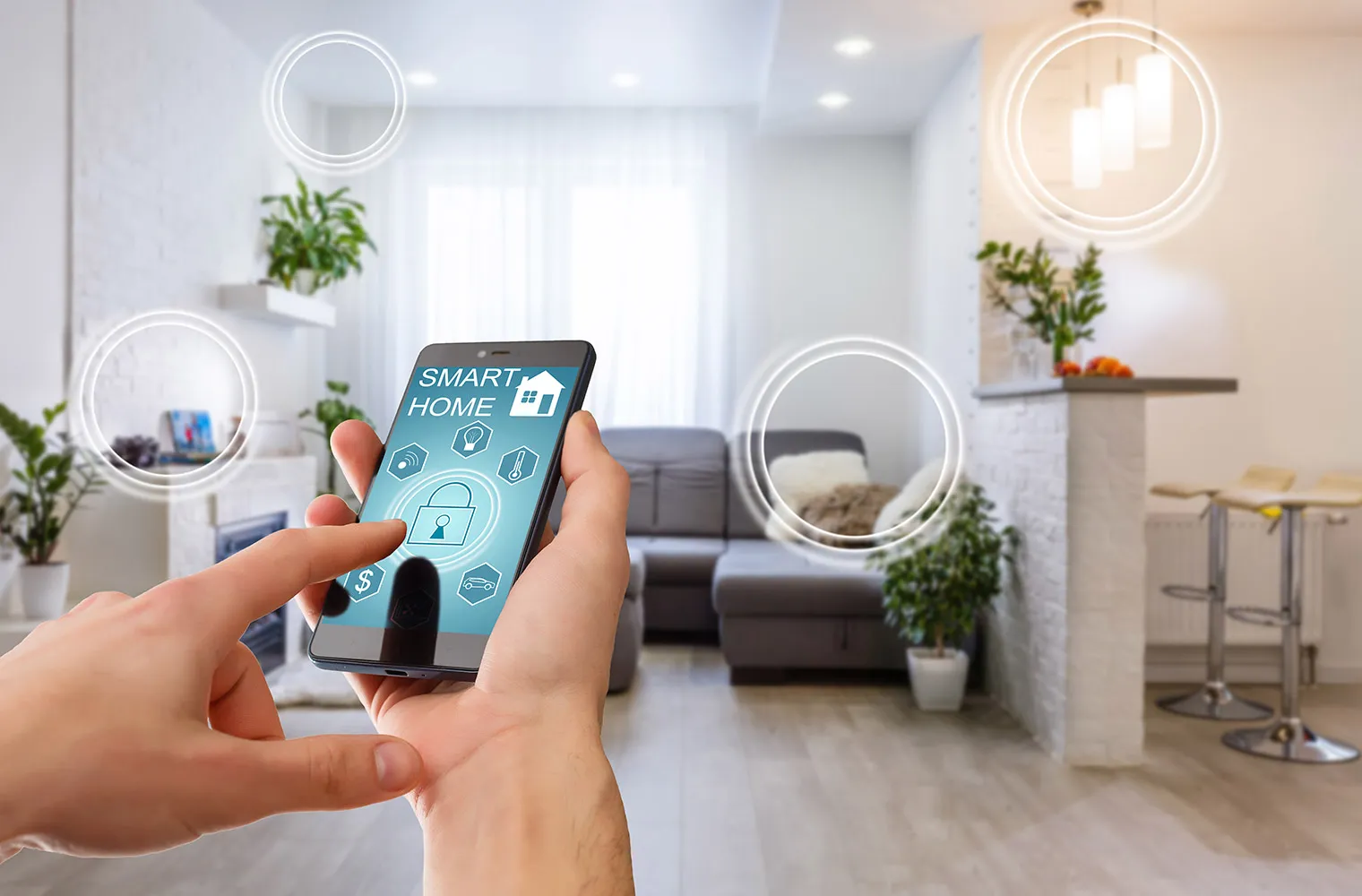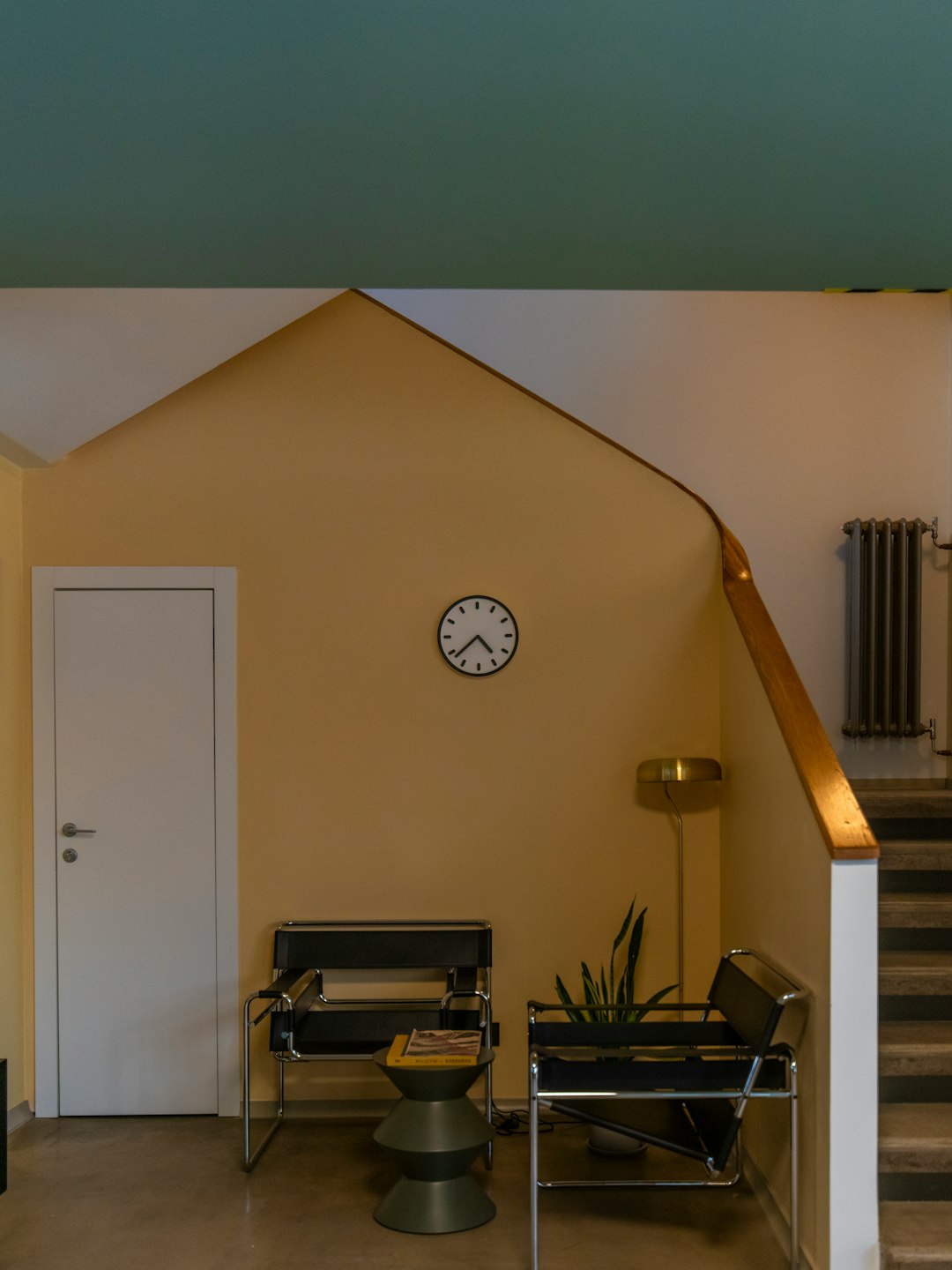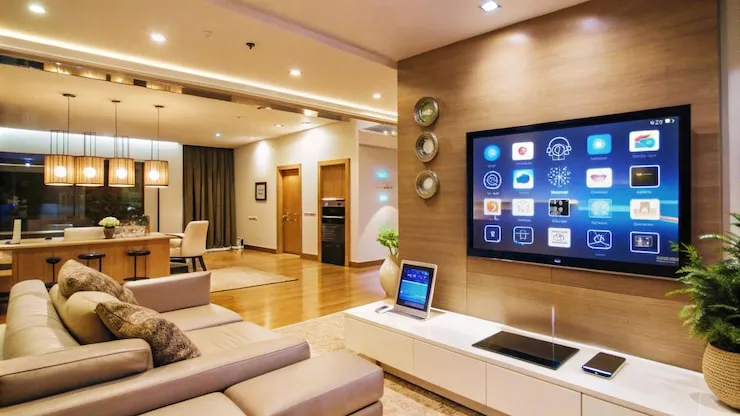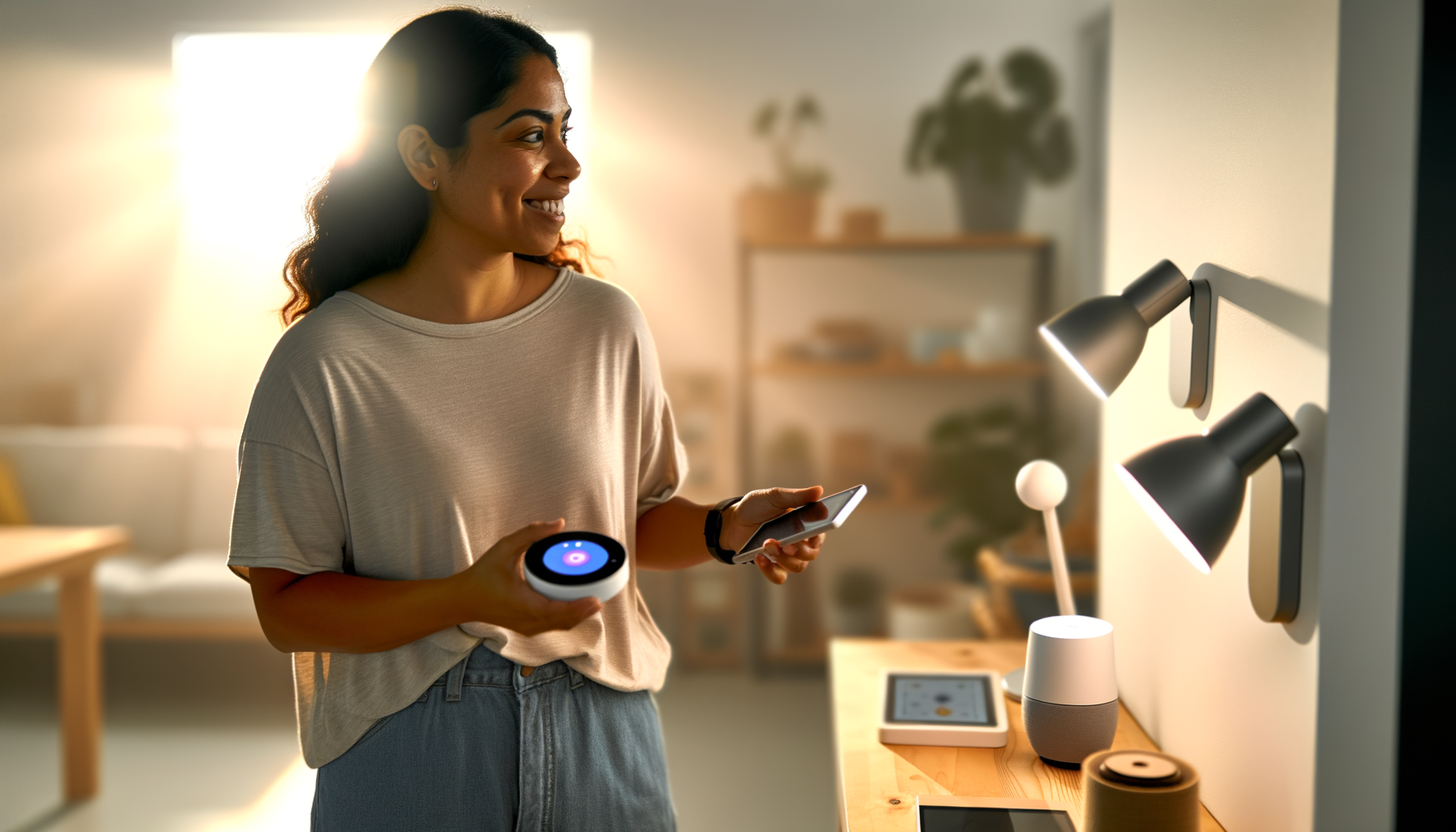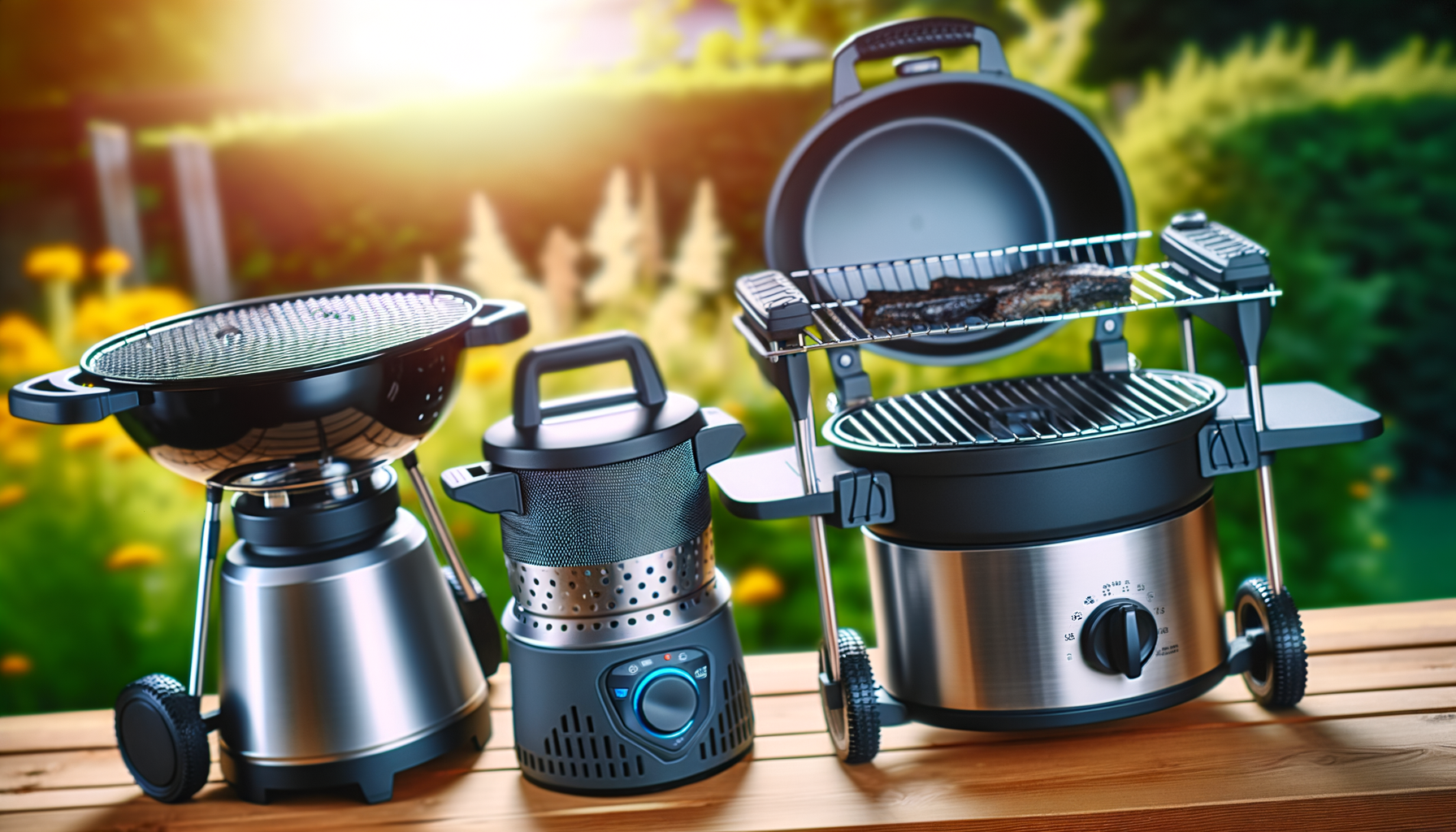I still remember the day I walked into my friend's house and watched him dim the lights with just his voice. The TV turned on by itself, the AC adjusted to the perfect temperature, and his coffee maker started brewing fresh coffee - all without him lifting a finger. That was my "aha!" moment. I knew I had to have a smart home too. But here's the thing - I'm not rich. Like most people, I needed to find ways to make my home smart without spending a fortune. After months of research and trial and error, I discovered something amazing: you don't need thousands of dollars to create an incredible smart home. You just need to know where to start. Today, I'm sharing everything I learned about affordable smart home automation systems. Trust me, by the end of this guide, you'll know exactly how to transform your regular home into a smart home that feels like magic.
What Are Affordable Smart Home Automation Systems?
Let me explain this in simple terms. A smart home automation system is like having a super smart helper that controls different parts of your house. It can turn lights on and off, adjust your thermostat, lock your doors, and even play your favorite music - all automatically or with simple voice commands. The best part? Affordable smart home automation systems make this technology available to everyone. You don't need to be a tech genius or have deep pockets. These systems are designed for regular people like you and me.
I learned that smart home automation works through three main parts:
- Smart devices (like smart bulbs, plugs, and speakers)
- A central hub (like your phone or a smart speaker)
- An internet connection (your regular WiFi)
When I first started, I thought I needed to replace everything in my house. Boy, was I wrong! The beauty of modern smart home systems is that you can start small and grow over time.
Why I Chose Budget-Friendly Smart Home Solutions
Before diving into expensive systems, I asked myself: "What do I really need?" This question changed everything for me.
Here's what I discovered about affordable smart home automation systems in India:
Cost Savings That Actually Matter My electricity bill dropped by 25% in the first three months. Smart plugs helped me identify which devices were eating up power, and automated schedules ensured lights weren't left on unnecessarily.
Security Without the Premium Price I installed basic smart cameras and door sensors for less than 5,000. These gave me peace of mind when traveling, and I could check on my home from anywhere.
Convenience That Fits My Lifestyle Simple things like automated coffee brewing in the morning and lights that gradually dim at bedtime improved my daily routine significantly.
Easy Setup for Non-Tech People Most budget-friendly systems are designed for people like me - those who want technology to work without becoming IT experts.
The biggest lesson I learned? You don't need everything to be smart right away. Start with one room or one function, and expand gradually.
Top Budget Smart Home Devices That Actually Work
After testing dozens of devices, here are the ones that gave me the best bang for my buck:
Essential Affordable Smart Home Automation Systems for Beginners
Smart Plugs (500-800 each) These were my gateway drug to home automation. I plugged them into regular outlets and suddenly could control any device remotely. My first smart plug controlled a table lamp, and I felt like a wizard turning it on from my office.
Smart LED Bulbs (300-600 each) Replacing just five bulbs in my main living areas transformed the entire feel of my home. I could dim them for movie nights, brighten them for cleaning, and even change colors for parties.
Smart Speakers (2,000-4,000) This became my central command center. I started with one in the living room and gradually added more. Voice control made everything feel effortless.
Smart Door Locks (3,000-8,000) One of my best investments. No more hiding spare keys or worrying about losing them. I could let friends in remotely and always knew who entered my home.
Advanced But Still Cheapest Home automation system in India
Smart Thermostats (4,000-10,000) These paid for themselves within six months through energy savings. I programmed different temperatures for different times of day.
Security Cameras (1,500-5,000 each) Basic models with good image quality and smartphone alerts. I placed them strategically at entry points.
Smart Smoke Detectors (2,000-4,000) Peace of mind is priceless. These connect to my phone and alert me even when I'm away.
Each device I added made my home feel more sophisticated, but the total cost stayed manageable because I spread purchases over several months.
How to Set Up Your First Smart Home System
Setting up my first smart home system felt overwhelming at first, but I broke it down into simple steps:
Planning Your Affordable Smart Home Automation Systems Journey
Step 1: Choose Your Ecosystem I recommend starting with one platform (like Amazon Alexa, Google Home, or Apple HomeKit) and sticking with it. This ensures all your devices work together smoothly.
Step 2: Start with One Room I began with my bedroom. One smart speaker, two smart bulbs, and a smart plug for the bedside lamp. Total cost: under 3,000.
Step 3: Test and Learn Before buying more devices, I spent two weeks learning how these worked. I set up routines, tested voice commands, and got comfortable with the app.
Step 4: Expand Strategically Next, I added devices to high-traffic areas like the living room and kitchen. Each addition built on what I already knew.
Installation Tips That Saved Me Hours
WiFi is King Strong WiFi signal in every room is crucial. I had to add a WiFi extender before expanding my smart home setup.
Read Instructions Carefully I know it's boring, but following setup instructions exactly saved me from countless headaches.
Group Similar Devices Creating groups like "Living Room Lights" or "Bedroom Devices" made voice control much easier.
Test Everything Twice Before considering a device "installed," I tested it from different location and with different family members.
The whole process took me about three months to complete, but I was using and enjoying my smart home from day one.
Top 10 Smart Home Devices for Indian Homes
Based on my experience and feedback from friends who followed my recommendations, here are the devices that work best in Indian conditions:
Must-Have Smart Devices Under 5,000
- Amazon Echo Dot (3,000-4,000) Perfect starting point. Works with most other smart devices and has excellent voice recognition even with Indian accents.
- Wipro Smart LED Bulbs (400-600 each) Reliable, affordable, and designed for Indian voltage conditions. I've had zero failures in two years.
- Syska Smart Plugs (500-700 each) Sturdy build quality and work consistently with Indian power fluctuations.
- Mi Security Camera Basic (2,000-3,000) Good image quality, reliable smartphone alerts, and works well in Indian lighting conditions.
- Godrej Smart Door Lock (6,000-8,000) Slightly over budget but worth it. Designed for Indian doors and weather conditions.
Premium But Still Affordable Smart Home Automation Systems
- Honeywell Smart Thermostat (8,000-12,000) Excellent for Indian climate conditions. The energy savings justified the cost.
- Philips Hue Starter Kit (8,000-10,000) Premium smart lighting with incredible color options and reliability.
- Ring Video Doorbell (10,000-15,000) Perfect for Indian housing styles, both apartments and independent houses.
- Nest Smoke Detector (6,000-8,000) Works reliably in dusty Indian conditions and rarely gives false alarms.
- August Smart Lock Pro (12,000-18,000) Premium option that works with most Indian door types and provides excellent security.
Each of these devices proved reliable in real Indian conditions - dealing with power cuts, voltage fluctuations, dust, and extreme temperatures.
Smart Home Security on a Tight Budget
Security was my biggest concern when starting my smart home journey. I worried about hackers, privacy, and whether budget devices would actually protect my family.
Building Secure Affordable Smart Home Automation Systems
Layer Your Security I didn't rely on just one device. Instead, I created multiple layers:
- Smart door locks as the first barrier
- Motion sensors in key areas
- Security cameras at entry points
- Smart lighting that simulates presence when we're away
Choose Devices with Good Encryption Even budget devices can have strong security. I researched each purchase and chose brands with good security reputations.
Regular Updates Matter I set reminders to update device firmware monthly. This simple habit keeps security patches current.
Cost-Effective Security Solutions
DIY Security System (Total: 15,000-25,000)
- 4 basic security cameras: 8,000
- Smart door lock: 6,000
- Motion sensors (3): 4,500
- Smart plugs for lamp automation: 2,000
- Basic smart hub: 3,000
This setup rivals professional systems costing 3-4 times more.
Smart Lighting for Security I programmed lights to turn on and off randomly when we're away, making it look like someone's home. This simple trick costs almost nothing but provides excellent deterrent value. The peace of mind from these budget security measures is incredible. I sleep better knowing my home is protected without breaking the bank.
Energy Savings Through Smart Automation
The money I saved on electricity bills helped pay for new smart devices. Here's how affordable smart home automation systems cut my energy costs:
Real Numbers from My Home
Before Smart Home:
- Monthly electricity bill: 3,200
- Wasted energy from forgotten lights/fans: Estimated 20%
- Manual thermostat adjustments: Inefficient timing
After Smart Home (6 months later):
- Monthly electricity bill: 2,400
- Wasted energy: Nearly eliminated
- Automatic temperature control: Optimized for efficiency
Annual savings: 9,600
Smart Energy-Saving Strategies
Automated Schedules I programmed lights and fans to turn off automatically when rooms are empty. Motion sensors help detect presence accurately.
Smart Thermostat Programming Different temperatures for different times:
- 26°C during day (when nobody's home)
- 24°C in evening (comfort time)
- 27°C at night (sleeping temperature)
Power Monitoring Smart plugs showed me which devices consume the most power. I was shocked to learn my old TV consumed significant power even when "off."
Load Management During peak hours (when electricity costs more), my system automatically reduces non-essential device usage. These energy savings made my smart home practically pay for itself within the first year.
Voice Control and Mobile Apps Made Simple
Learning to control my affordable smart home automation systems through voice and smartphone apps was easier than I expected.
Voice Commands That Actually Work
Basic Commands I Use Daily:
- "Turn on living room lights"
- "Set bedroom temperature to 24 degrees"
- "Play morning music playlist"
- "Lock all doors"
- "Good night" (turns off all lights, locks doors, sets security)
"Good morning" routine: Gradually brightens lights, starts coffee maker, reads weather and news
Mobile App Management
Single App Control Instead of juggling multiple apps, I use Amazon Alexa app to control most devices. This simplified everything.
Smartphone Shortcuts
I created home screen shortcuts for common tasks like "All lights off" and "Security check."
Remote Access The ability to control my home from anywhere proved invaluable. I've turned on AC before reaching home on hot days and checked security cameras while traveling. Voice control felt magical at first, but now it's just part of daily life. Even my parents, who are not tech-savvy, learned to use basic voice commands within a week.
Troubleshooting Common Smart Home Issues
Every smart home faces problems. Here are the issues I encountered and how I solved them:
WiFi and Connection Problems
Issue: Devices Going Offline This happened frequently in my first month. The solution was improving WiFi coverage with a mesh router system (4,000 investment that solved 80% of my problems).
Issue: Slow Response Times
Some commands took 5-10 seconds to execute. I fixed this by reducing the number of devices on my main WiFi network and creating a separate network for smart devices.
Issue: Voice Commands Not Recognized My smart speaker struggled with Indian accents initially. Speaking slowly and clearly for the first few weeks helped it learn my voice patterns.
Device-Specific Solutions
Smart Bulbs Flickering This usually meant voltage fluctuations. Installing a voltage stabilizer (2,000) solved the problem completely.
Smart Plugs Overheating I learned not to overload them. Each plug has a maximum wattage limit that should be respected.
App Crashes Regular app updates and phone restarts (once weekly) prevented most crashes.
Affordable Smart Home Automation Systems Maintenance
Monthly Tasks:
- Check all device connections
- Update firmware and apps
- Test security system components
- Clean camera lenses and sensors
Quarterly Tasks:
- Review and optimize automation routines
- Check energy usage reports
- Evaluate and add new devices if needed
Most issues have simple solutions once you understand the basics. Don't get discouraged by initial problems - they're part of the learning process.
Future-Proofing Your Smart Home Investment
When building affordable smart home automation systems, I wanted to ensure my investment would remain valuable for years. Here's how I planned for the future:
Choosing Technologies That Last
Standard Protocols I focused on devices using WiFi, Zigbee, or Z-Wave protocols. These are industry standards that won't become obsolete quickly.
Popular Ecosystems Sticking with major platforms (Amazon Alexa, Google Home) ensures continued support and new device compatibility.
Expandable Systems I chose systems that allow easy addition of new devices without replacing existing ones.
Upgrade Path Planning
Phase 1 (Completed): Basic Automation
- Smart lighting and plugs
- Voice control
- Basic security
- Total cost: 15,000
Phase 2 (In Progress): Enhanced Comfort
- Smart thermostats
- Advanced security cameras
- Smart entertainment system
- Estimated cost: 25,000
Phase 3 (Future): Full Automation
- Smart appliances
- Advanced sensors
- Energy management system
- Estimated cost: 40,000
This phased approach keeps costs manageable while building toward a comprehensive smart home.
Staying Updated with Cheapest Home Automation System in India
Regular Research I spend 30 minutes monthly reading about new budget-friendly smart home devices and technologies.
Community Learning Joining online forums and local smart home groups provides valuable tips and device recommendations.
Manufacturer Updates Following device manufacturers on social media keeps me informed about new features and compatibility updates.
The key is building a foundation that grows with you rather than requiring complete replacement every few years.
My Personal Smart Home Success Story
Let me share how affordable smart home automation systems transformed my daily life:
Before Smart Home Life
My typical evening involved walking around the house turning on lights, adjusting fans, checking if doors were locked, and manually setting up entertainment systems. I often forgot to turn things off, leading to higher electricity bills and unnecessary wear on devices.
After Smart Home Transformation
Now my "coming home" routine happens automatically. As I approach my house, the smart lock recognizes my phone and unlocks the door. Lights turn on gradually, the AC adjusts to my preferred temperature, and my favorite music starts playing softly.
Real Impact on My Family:
My Wife's Experience: She was skeptical initially but became the biggest fan. Voice control while cooking (hands full) and automated morning routines made her daily tasks much easier.
My Parents' eaction: They visited six months after my smart home setup. Despite being technology-averse, they learned basic voice commands within days and asked for help setting up their own system.
Security Peace of Mind: During a recent work trip, I received a motion alert at 2 AM. I could immediately check the camera feed and confirm it was just a cat in the garden. This incident proved the system's value.
Unexpected Benefits
Social Interactions: Friends love visiting our "smart house." It's become a conversation starter and entertainment source during gatherings.
Learning Opportunities: My curiosity about smart home technology led me to learn more about networking, automation, and even basic programming.
Problem-Solving Skills: Troubleshooting device issues improved my general tech problem-solving abilities.
The investment in affordable smart home automation systems provided returns far beyond monetary savings - it genuinely improved our quality of life.
Conclusion: Your Smart Home Journey Starts Today
Building my smart home using affordable smart home automation systems has been one of the most rewarding projects I've undertaken. What started as curiosity about my friend's voice-controlled lights became a journey that transformed how my family lives, saves energy, and feels secure. The most important lesson I learned? You don't need to be wealthy or tech-savvy to create an amazing smart home. You just need to start small, choose the right devices, and expand gradually.
Key Takeaways for Your Journey:
Start Simple: Begin with basic devices like smart plugs and bulbs. Learn how they work before expanding.
Research Thoroughly: Choose devices that work well in Indian conditions and have good customer support.
Plan for Growth: Build a system that can expand over time rather than requiring complete replacement.
Focus on Value: Prioritize devices that provide real benefits for your lifestyle and budget.
Be Patient: Building the perfect smart home takes time. Enjoy the process and celebrate small wins.
Your Next Steps:
- Choose your ecosystem (Amazon Alexa, Google Home, or Apple HomeKit)
- Buy your first device (I recommend starting with a smart speaker)
- Install and learn how to use it effectively
- Plan your next addition based on your most pressing needs
- Connect with others who are on similar smart home journeys
The affordable smart home automation systems available today make this technology accessible to everyone. Your journey to a smarter, more comfortable, and more efficient home can start with a single device costing less than 1,000. Trust me, once you experience the convenience and benefits of home automation, you'll wonder how you ever lived without it. The future of comfortable living isn't just for the wealthy anymore - it's available to anyone willing to take the first step. Your smart home adventure awaits. What device will you start with?



